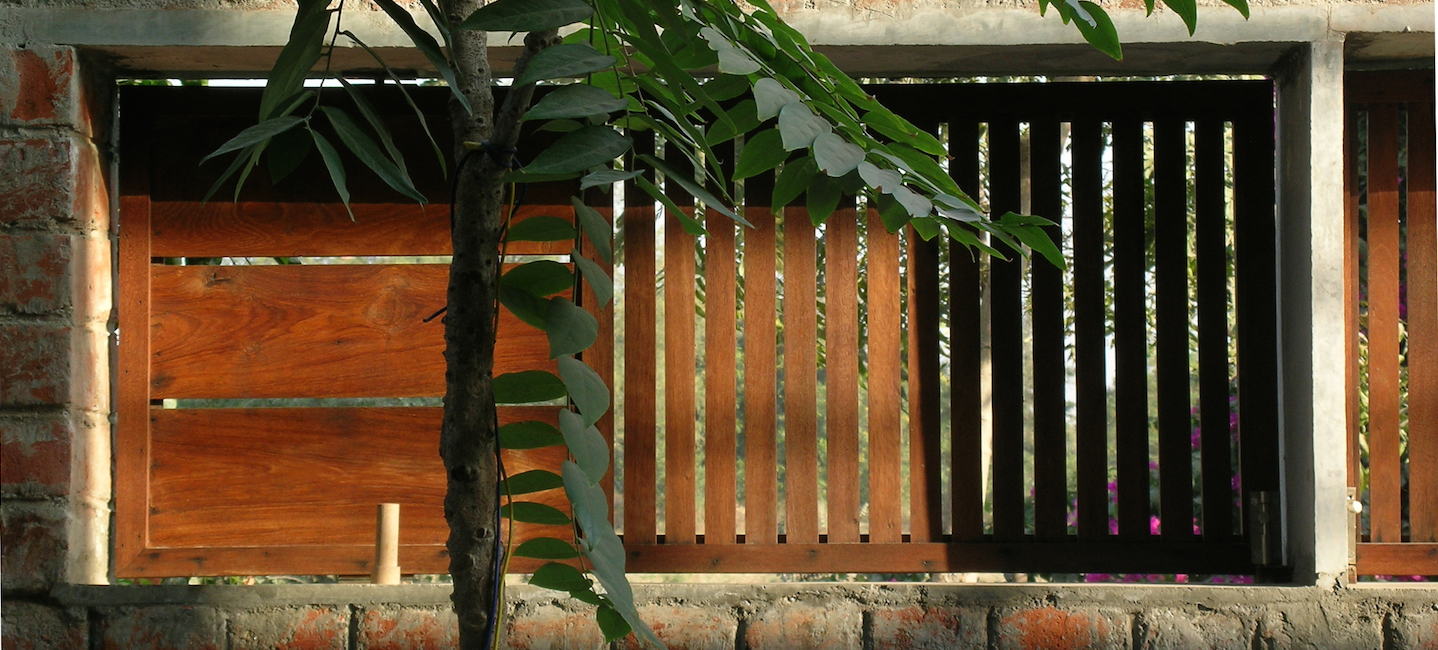
Our home is part of a small development of residential plots for ‘second homes’ about 12 kms west of Ahmedabad. Known as Suramya-3, it is now part of the extended suburbia.
Set amidst paddy and millet fields with large trees, it is an idyllic place to retire to.
The idea of living outside the city limits was born out of a conviction that one can define an environment to dwell in a sustainable manner with fewer resources. This revelation came after unsuccessful attempts to adapt to housing options available to us within the city that met with a certain basic criteria.
Our effort was to connect with simple processes of nature around us and at the same time, be a part of a growing city. The solar, lunar and the agrarian cycles, their social dimension, connections with people, their festivities was the macro order to which we wanted to orient our lives to. The paradoxes of living on the edge of development with its simultaneous experience of urban and rural life have begun to shape our understanding of people and life in these zones.
The main characteristic of the plan is two houses with a shared garden court connected with deep shaded verandahs. The living and dining areas form the core of these connections. The verandah assumes a pride of the place as the outdoor living room, coalescing unhindered vistas from the east and the west. A kitchen garden with a lily pool on the east and the garden court and farms on the west, define their distinctive zones. The organization of the garden and the semi open verandah generated the form of the buildings.
The house expresses this idea of alternating, overlapping usages of spaces and private zones. What is public and what is private, as a space, depends on time, people and the mood. The south block comprises a study cum library and guest bedroom and the bedroom for the parents. The north block houses the kitchen and dining with the two bedrooms for us and our children.
There is no formal living room. The outside is the big dwelling space and the house, the backdrop. The semi-open spaces are used as the living spaces for most part of the day.
Owing to this pattern of usage, garden spaces are generously scaled in contrast to intimate scale of the interiors.
The verandahs and a terrace over the children’s room are our summer sleep spaces that are used from the last week of March to the first week of June. The upper level bedroom actually extends as a space onto the terrace during summers, an aspect which is immensely enriching.
The structure is a combination of masonry load bearing walls and RCC elements. All exposed roof slabs are insulated with hollow terra-cotta modules and covered with china mosaic. There is a conscious attempt to locate spaces such as kitchens, storages and toilets towards the south / west to act as heat buffers and open spaces with deep overhangs towards the south. A gravity vent placed on the uppermost roof slab below the dining area continuously ventilates the interior spaces and ensures a good amount of air change.
The lily pond holds run off water from the verandah roof that is eventually used to irrigate the kitchen garden. Run off from the ground is channeled to a recharge well in the kitchen garden. A rain-water harvesting tank built in the garden holds enough water for the year.